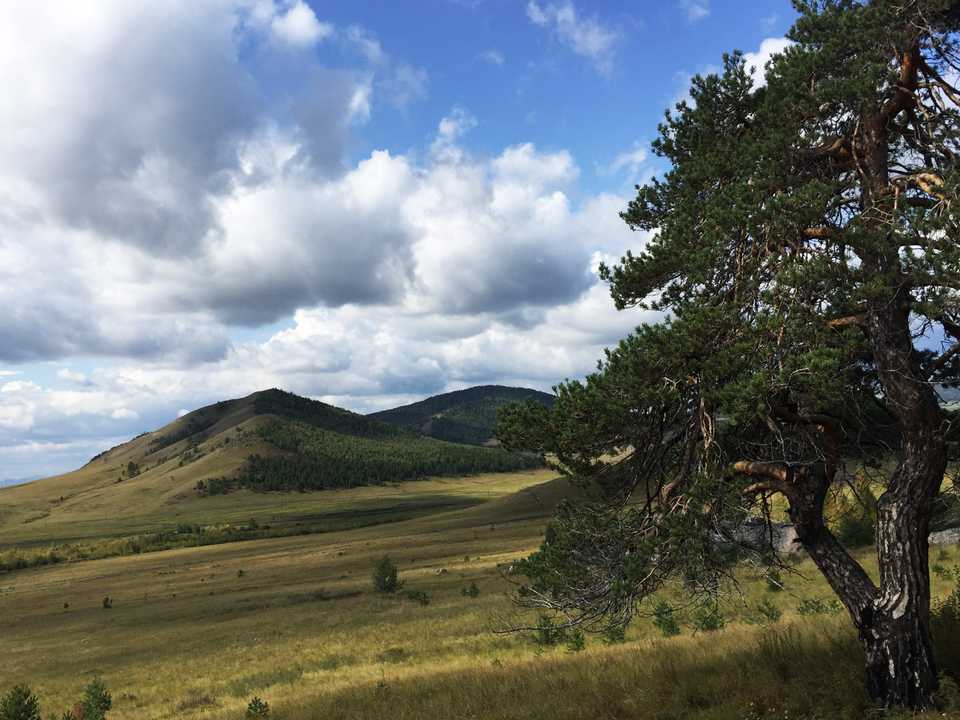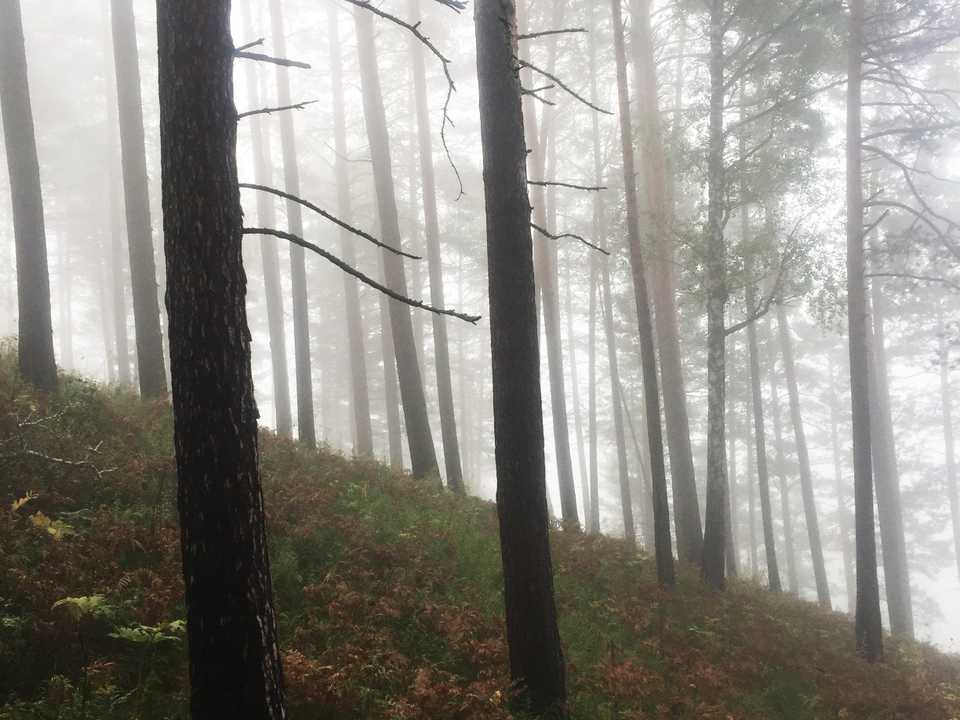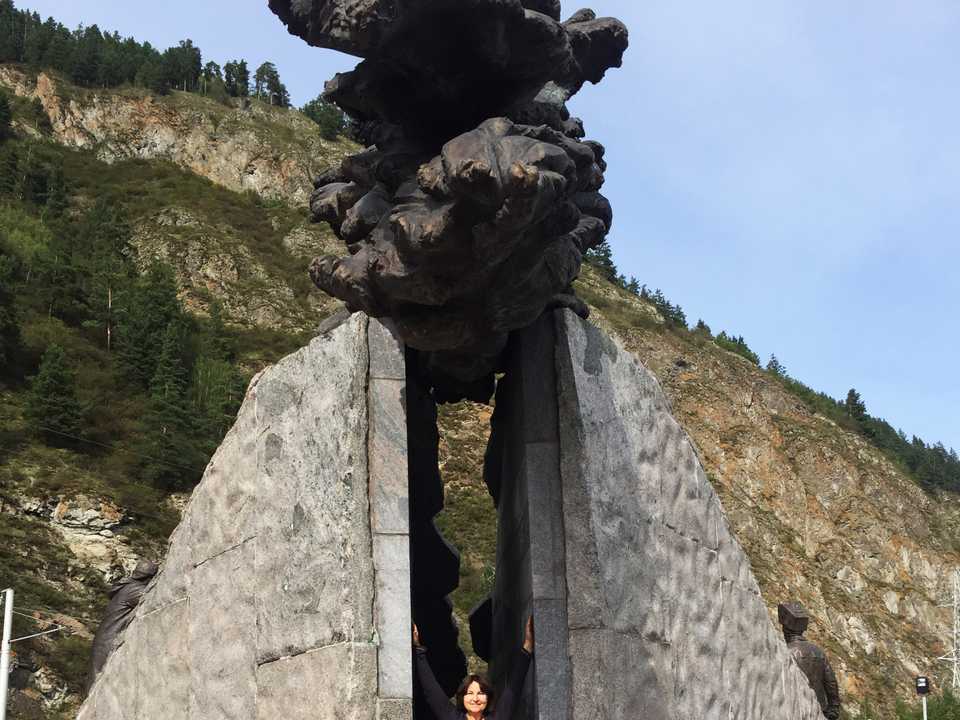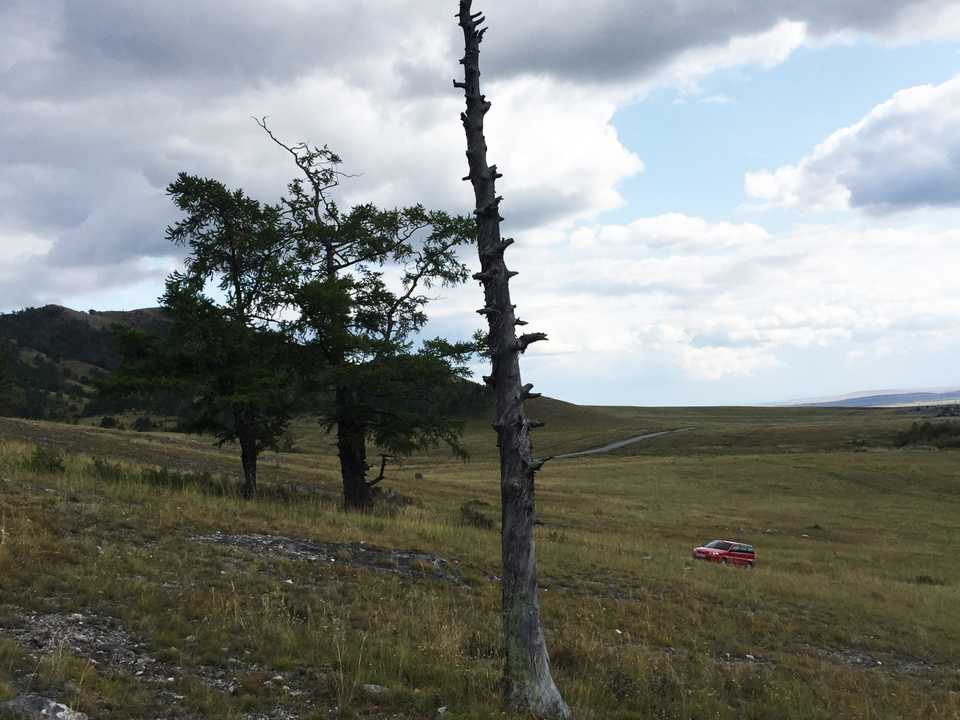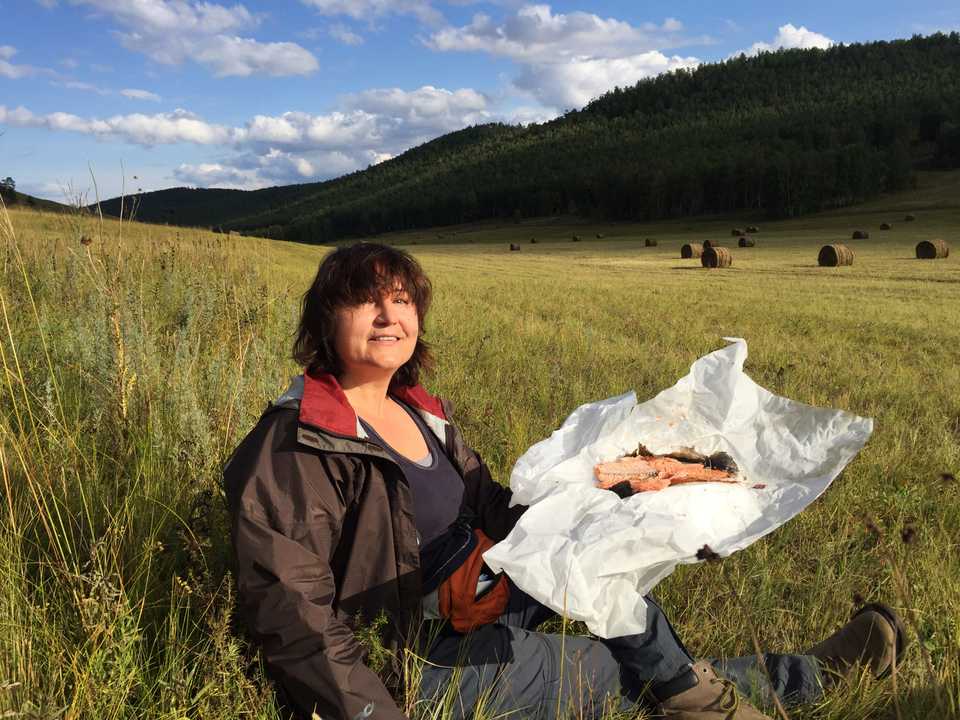Activities
Overview of Activities
TRISH activities aim to improve our understanding of Arctic Amplification and investigate changes to hydrology and climate at high latitudes - all of which have implications for populations across the globe. Project activities are centered around:
- Tree-ring Proxy Network Development
- Hydrological Modeling
- TRISH Tool Development
- Training and Outreach
- International Collaboration Services
New tree-ring network in Khakassia and Tuva
As of now, the project has developed a network of precipitation-sensitive tree rings along the upper reaches of the Yenisei River. The new tree-ring data updates and extends the historical network of tree-ring width chronologies in this region to 2019f. Additionally, we developed a set of pseudo tree-ring records via VS-forward simulation. This new tree-ring dataset will be incorporated into the TRISH-tool database.
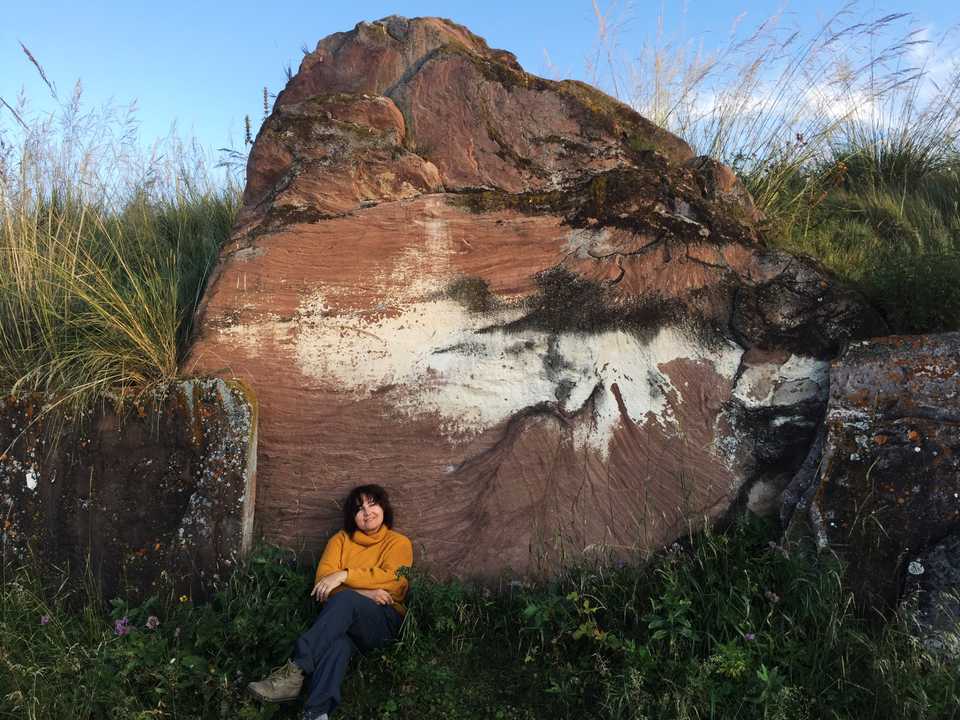 Large stone of the Great Salbyk kurgan. This tree-ring sampling area
has some of the richest archaeological heritage in Siberia. Many
kurgan fields have well-preserved timbers inside burials
suitable for tree-ring analysis.
Large stone of the Great Salbyk kurgan. This tree-ring sampling area
has some of the richest archaeological heritage in Siberia. Many
kurgan fields have well-preserved timbers inside burials
suitable for tree-ring analysis.
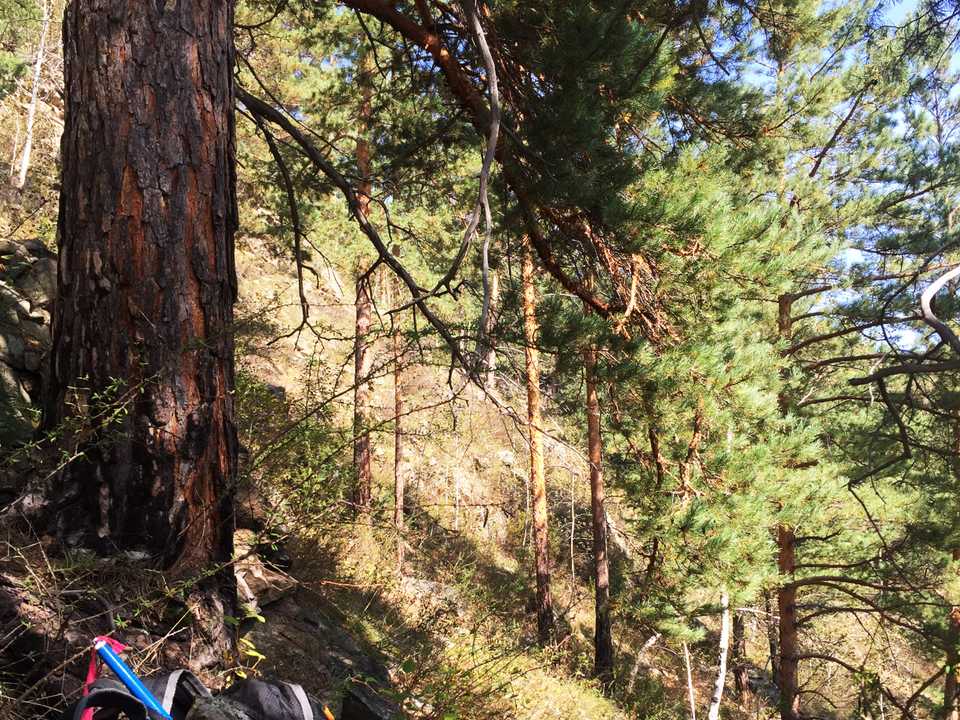 Sampling on extremely steep slopes ensures a strong hydrological
signal in the tree-ring widths. The signal in these trees is so
strong because growth conditions are very dry on these slopes.
However, these dry conditions also make these forests more susceptible
to the increasingly-frequent fires in this region.
Sampling on extremely steep slopes ensures a strong hydrological
signal in the tree-ring widths. The signal in these trees is so
strong because growth conditions are very dry on these slopes.
However, these dry conditions also make these forests more susceptible
to the increasingly-frequent fires in this region.
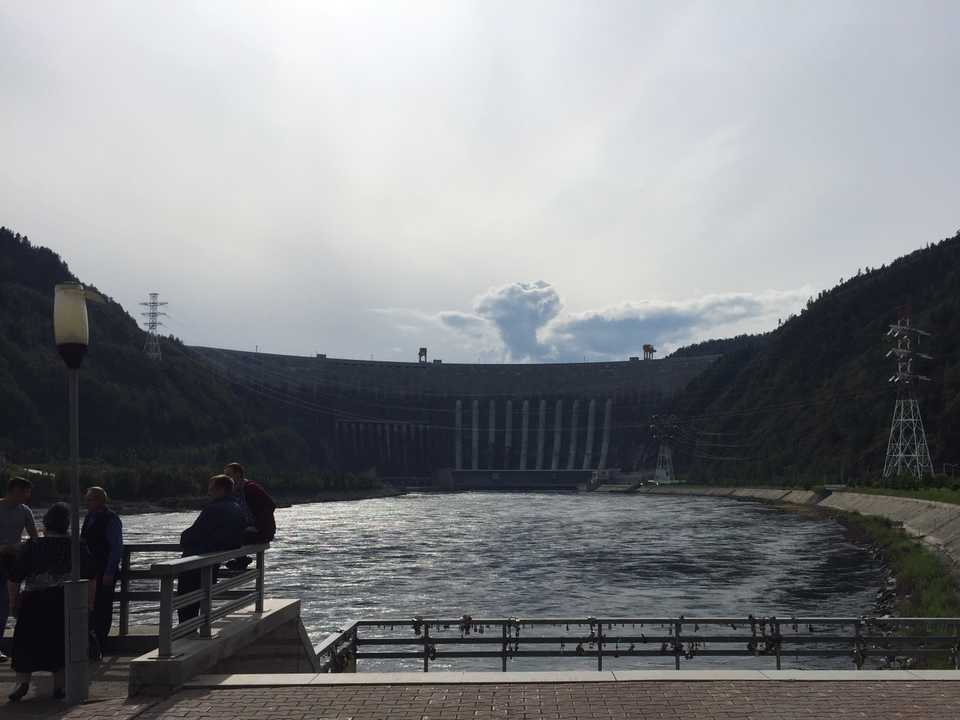 Sayano-Shushenskaya Dam, 242 m high, on the Yenisei River in
Khakassia, Russia. This is the largest power plant in Russia and holds
9th place in the ranking of the world's largest hydroelectric plants.
The dam impacts the natural river flow since 1963.
Sayano-Shushenskaya Dam, 242 m high, on the Yenisei River in
Khakassia, Russia. This is the largest power plant in Russia and holds
9th place in the ranking of the world's largest hydroelectric plants.
The dam impacts the natural river flow since 1963.
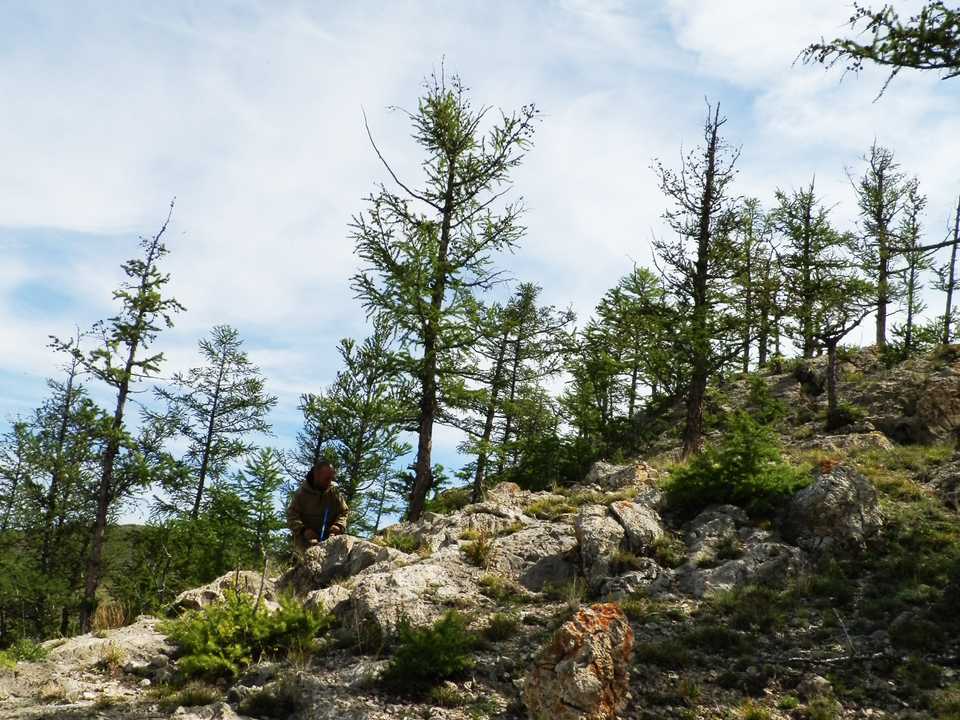 Larch and pine trees sampled in the vicinity of the
Sayano-Shushenskaya Dam in fall 2019. We search for old-growth
trees on steep slopes in forest-steppe ecotones. The
oldest trees reach up to 400–430 years in age, but these
trees are rare and hard to find.
Larch and pine trees sampled in the vicinity of the
Sayano-Shushenskaya Dam in fall 2019. We search for old-growth
trees on steep slopes in forest-steppe ecotones. The
oldest trees reach up to 400–430 years in age, but these
trees are rare and hard to find.
NEW PAPER! 'Unprecedented acceleration of winter discharge of Upper Yenisei River inferred from tree rings'
The Yenisei River is the largest contributor of freshwater and energy fluxes among all rivers draining to the Arctic Ocean. Changes to the hydrology of the Yenisei Basin have implications for Artic Amplification and global climate, but a sparse network of discharge gauges makes it difficult to understand long-term variability. In a recently published study, we used a network of tree ring chronologies to reconstruct annual and winter discharge at the Kiyzyl gauge, revealing the last 25 years have seen an 80% upsurge in winter flow that is unprecedented in the last 214 years. We suggest these changes may be related to accelerated warming of the permafrost in the discontinuous zone of South Siberia and widespread forest fires.
Check out the link to our paper here
Krasnoyarsk Dam Video
Video taken June 11, 2021. The spillway at the Krasnoyarsk dam (Hight 124 m or 407 ft, Length 1,065 m or 3,494 ft) has been in operation for almost one month. Extremely excessive flow of the upstream Yenisei River poses flooding hazard to major cities of Krasnoyarsk province and threatens operation of large hydropower stations. As the climate warms and the hydrology of the Arctic changes it will become even more important to understand how frequent events such as these have been historically.
Larch Trees and the Siberian Winter
Is that a strangely shaped snowdrift or a frozen sarcophagus? Of all the challenges trees like Siberian larch (Larix siberica) face, the brutal Siberian winter may be its toughest! For more clips of Siberian winter check out the following video by Yuri Shchepko

